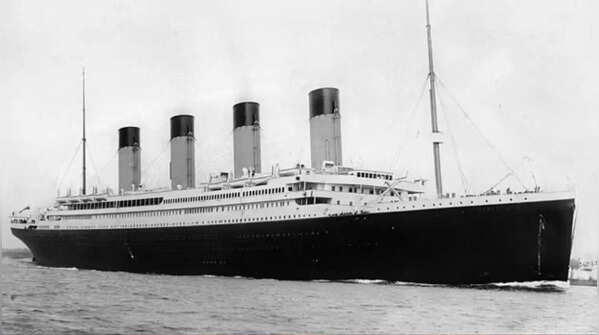Titanic’s last moments get captured in 3D: Images show the final conditions that led to it’s doom

Titanic’s last moments get captured in 3D: Images show the final conditions that led to it’s doom
The Titanic was a symbol of top notch human engineering yet its end was tragic. Although the majestic ship sank owing to being hit with an iceberg, it stands among one of those topics which will keep the world hooked to time and again.
Recently, new 3D scans of the wreck have given us a look into the ship's final moments. The deep-sea mapping company Magellan Ltd. conducted these scans that show the previously unseen details of the wreck. These images give a fresh look at the doomed luxury liner, especially the tragic moment when it must have split in two after striking an iceberg in 1912. The scans include photos of the Titanic's damaged boiler room, the flooding of the hull, and the heroic actions of the ship's crew. Here are some photos of one of the most infamous maritime disasters in history.

New details about the ship
The latest 3D scans of the Titanic have revealed some new details about the ship’s final moments. Using high-tech imaging, the experts at Magellan Ltd. were able to capture the ship from different angles, focusing on the areas where it split in two. These scans show the twisted remains of the ship, especially the stern, which is now a crumpled mess of metal after hitting the ocean floor. The images also provide a clearer look at the damage caused by the iceberg and provide new facts about the ship's tragic end.

Boilers still operating during final moments
Among the most significant discoveries in the 3D scan was the condition of Titanic's boilers. Some of them are concave, indicating they were still operational as the ship plunged into the icy waters of the Atlantic. This suggests that the Titanic's crew was desperately trying to keep the ship running, even in the face of certain disaster. This shows that the engineers and crew kept working to keep the ship’s lights on until the very end.

Small holes led to the big impact
The scan also revealed the devastating impact of the iceberg collision. Research leader Jeom-Kee Paik from University College London explained that the Titanic made only a glancing blow against the iceberg, but it resulted in punctures the size of A4 pieces of paper spread across six compartments of the hull. Simon Benson, a naval architect at the University of Newcastle, added, "Those small holes are across a long length of the ship." This detail confirms that it was the slow but steady influx of water into these compartments that led to the rapid drowning of the mighty ship that was only about 2 hours and 40 minutes.

Power in the ship was maintained till the last minute
The news scans also bring to light the heroic efforts of the engineers who worked to keep the Titanic running during the final hours. These brave men, including engineer Joseph Bell, shoveled coal into the furnaces to keep the lights on, even after knowing that they were facing a ‘certain’ death, Mr Stephenson, who is a Titanic analyst, told the BBC. Their actions bought precious time for passengers and crew to escape, brought to the limelight by the latest scans of an open steam valve in the stern that maintained power even as the ship sank beneath them.

The Titanic deteriorated over time
Since its sinking in 1912, the Titanic has slowly decayed, and recent scans show that the wreck is deteriorating at an accelerated rate. The once-pristine luxury liner is now a shadow of its former self, and experts predict that within the next 40 years, the wreck could disappear entirely. Despite the Titanic’s deterioration, these 3D scans preserve important details for generations to come.
The wreck lies about 350 nautical miles off Newfoundland, Canada, and is a memorial and a reminder of the price paid for the pride of human engineering.







